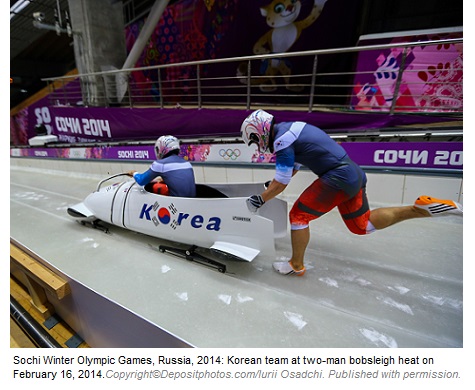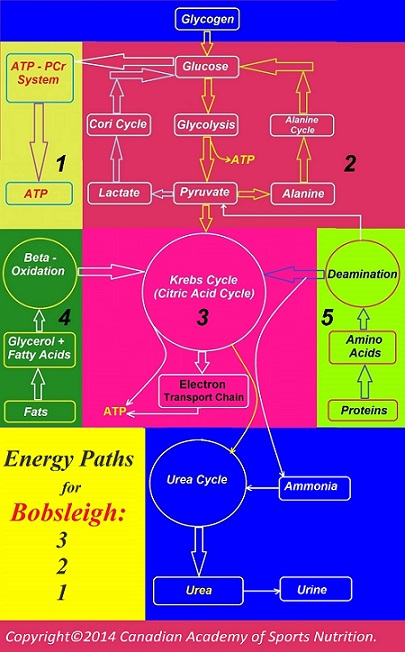Bobsleigh is a winter Olympic sport in which a team of two or four athletes launch a gravity – powered racing sled down a narrow and twisting icy track, steering to pass the finishing line with the quickest time possible.
Bobsleigh skeleton is a variant of bobsleigh in which only one athlete rides the sled down the icy course while lying face down.

|
Bobsleigh Events: |
|
|
Men`s Events |
Women`s Events |
|
Bobsleigh – Two men – Four men Bobsleigh skeleton – Individual |
Bobsleigh – Two women Bobsleigh skeleton – Individual |
|
Bobsleigh: |
|||
|
Energy Systems* |
Anaerobic, ATP – CP |
10% |
|
|
Anaerobic, Glycolysis |
40% |
||
|
Aerobic |
50% |
||
|
Yes |
|||
|
Average Calories Burned per One Hour** |
480 |
||
|
Endurance Diet Required |
No |
||
|
Risk of Muscle Breakdown (Rhabdomyolysis)*** |
Low |
||
|
Risk of Sports Injuries |
High |
||
|
Benefits from Creatine**** |
Moderate |
||
|
Fitness Demands |
Agility |
Yes |
|
|
Endurance |
++ |
||
|
Explosive Power |
Yes |
||
|
Speed |
Yes |
||
*See “Energy Systems” under the section of “Sports Nutrition”.
**Your body weight and body metabolism are important elements affecting the average calories you burn during any physical activities. This is the average amount of calories burned by a person with a body weight of 155 Ibs (70 Kg) within one hour of this sport.
***See “Post – Exercise Rhabdomyolysis” under the section of “Athletic Disorders”.
****See “Creatine Monohydrate” under the section of “Sports – Performance Enhancers”.
For the “energy paths” of this sport, see the “energy map” below.


